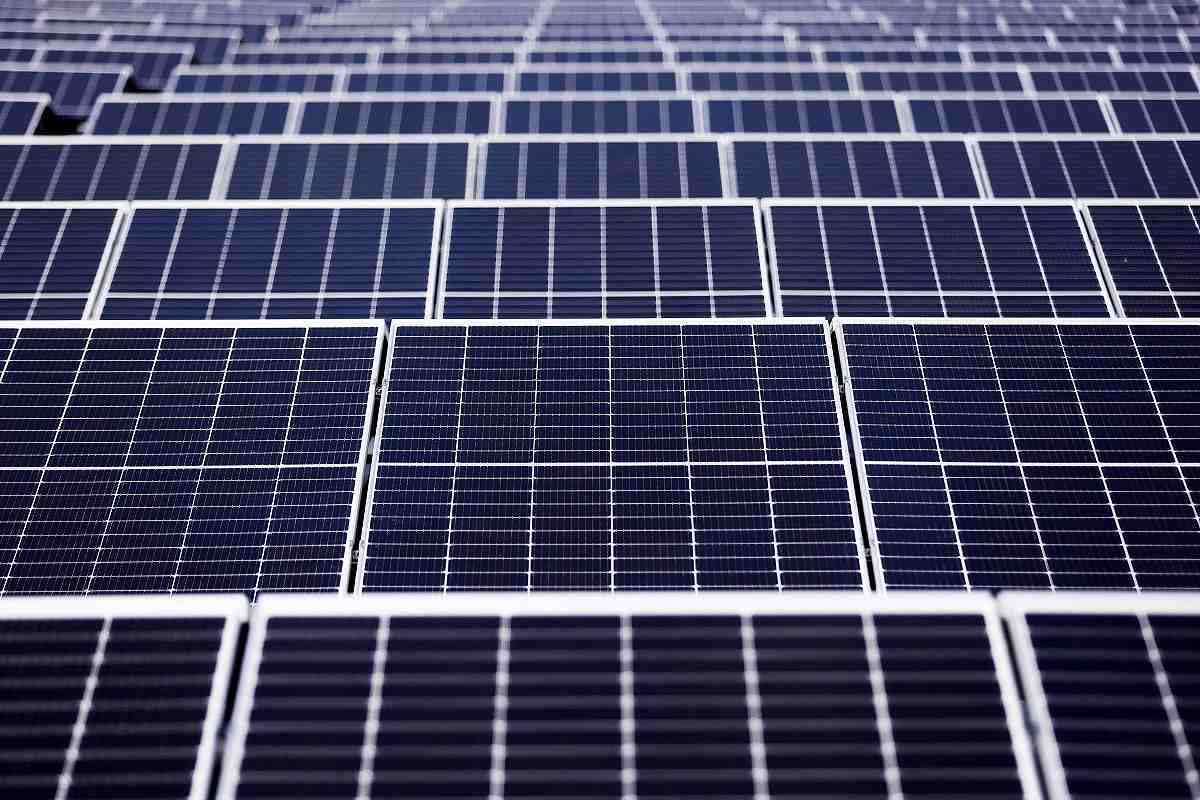
Solar panels are pictured on a floating photovoltaic power plant on lake Silbersee (Lake Silver) in Haltern am See, Germany, April 11, 2022.
11:15 JST, June 21, 2024
LONDON, June 21 (Reuters) – The world has enough solar power capacity to generate a fifth of its midday peak electricity needs on the longest day of the year in the northern hemisphere, up from 16% last year, a report by thinktank Ember showed on Friday.
WHY IT’S IMPORTANT
Solar power is currently the fastest growing source of electricity due to falling technology costs, and is expected to become the biggest source of electricity before 2050, some researchers have said.
Last year, solar generated a record 5.5% of global electricity, the Ember report added, and 34 economies in the world are now generating over 10% of their electricity from solar power.
CONTEXT
The northern hemisphere’s summer solstice on June 21 is the longest day of the year, but all days in June are similar enough in length that solar generation on that day will be close to the monthly average, based on calculations of the weighted average of hourly solar generation data.
Ember estimates 89% of the world’s solar panels are installed in the northern hemisphere.
BY THE NUMBERS
Based on a 24-hour average, solar can provide 8.2% of global total electricity on June 21.
For June as a whole, Ember expects the share of solar in total electricity generation to reach 9.6% in China, which is the largest solar market in the world.
In the European Union, solar’s share is set to be 20% in June, while the United States’ and India’s shares are expected to be 6.9% and 7.1% respectively.
KEY QUOTE
“At 20% share, solar is now a serious global electricity source,” said Kostantsa Rangelova, electricity analyst at Ember.
“Battery costs have collapsed, meaning solar power is already being used in the evening, not just in the daytime.”
"News Services" POPULAR ARTICLE
-

American Playwright Jeremy O. Harris Arrested in Japan on Alleged Drug Smuggling
-

Japan’s Nikkei Stock Average as JGB Yields, Yen Rise on Rate-Hike Bets
-

Japan’s Nikkei Stock Average Licks Wounds after Selloff Sparked by BOJ Hike Bets (UPDATE 1)
-

Japanese Bond Yields Zoom, Stocks Slide as Rate Hike Looms
-

Japan’s Nikkei Stock Average Buoyed by Stable Yen; SoftBank’s Slide Caps Gains (UPDATE 1)
JN ACCESS RANKING
-

Keidanren Chairman Yoshinobu Tsutsui Visits Kashiwazaki-Kariwa Nuclear Power Plant; Inspects New Emergency Safety System
-

Imports of Rare Earths from China Facing Delays, May Be Caused by Deterioration of Japan-China Relations
-

University of Tokyo Professor Discusses Japanese Economic Security in Interview Ahead of Forum
-

Japan Pulls out of Vietnam Nuclear Project, Complicating Hanoi’s Power Plans
-

Govt Aims to Expand NISA Program Lineup, Abolish Age Restriction























